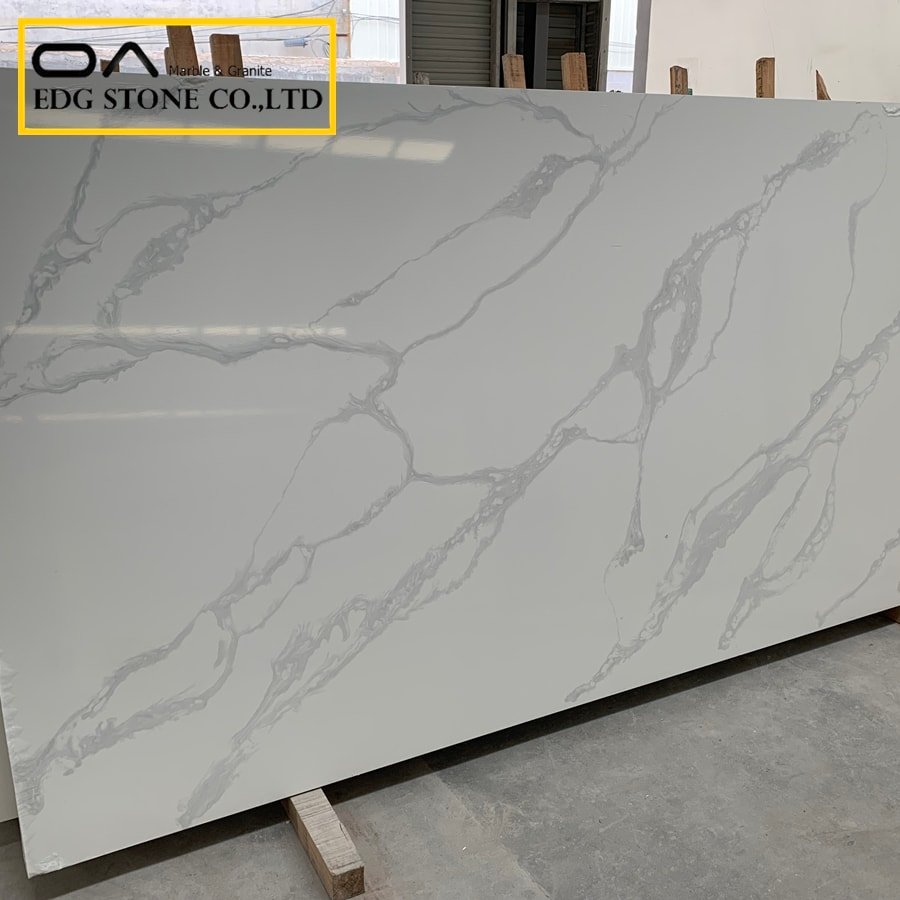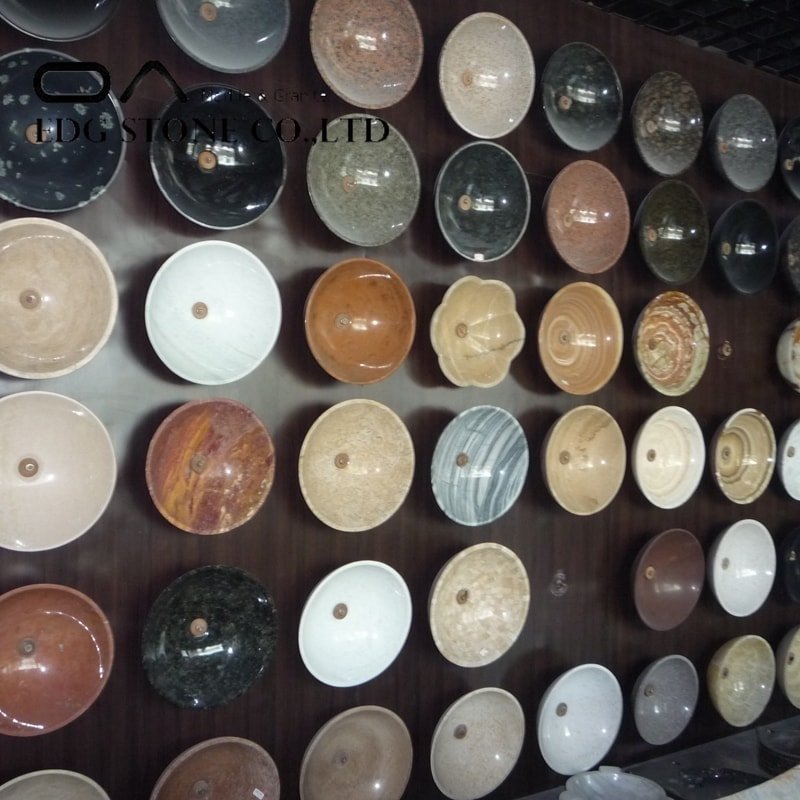Artificial quartz stone is a kind of artificial stone formed by die-casting with quartz sand as the main filler. The hardness of the plate can reach up to 7 Mohs hardness, high-temperature resistance of 300°, and beautiful color. The disadvantage is that it is not easy to process, and the fracture cannot be repaired. Basically, it can only be a flat table. As the quartz stone market continues to mature in our country, coupled with the subsidy of CNC equipment. At present, the difficulty of modeling and seamless stitching have been basically solved! The following introduces the cause analysis and solution measures of various quality problems of quartz stone slabs.
1. Stomatal phenomenon: round holes of different numbers and sizes appear on the surface of the sheet
Reason analysis: The vacuum degree in the press cannot reach the requirement of -0.098Mpa when the plate is pressed, and the air in the material is not discharged. There are several reasons why the vacuum cannot meet the requirements:
1. The vacuum pump is not powerful enough to pump the vacuum to -0.098Mpa.
2. The compressor is leaking. Air leakage at the connections, joints, and seals of each pipeline of the press.
3. The pressure plate starts to vibrate before the vacuum reaches -0.098Mpa, mainly the uncompacted back pressure plate.
solution:
1. Check whether the compressor is leaking: close the bleed valve, pump the vacuum to -0.098Mpa, close the valve connecting the pipeline between the compressor and the vacuum pump, and observe whether the pointer of the vacuum gauge moves back. If the pointer moves back, it means the compressor is leaking, and notify the machine repair. If the pointer does not move, it means that the compressor is not leaking. Check other possible causes.
2. Check whether the vacuum in the compressor can reach -0.098Mpa with a Maxwell vacuum gauge. If it does not reach -0.098Mpa, it means the compressor is leaking or the vacuum pump is not strong enough. First, check whether the compressor is leaking. If the compressor does not leak air, notify the mechanic to check the vacuum pump.
3. The uncompacted plate that needs to be back pressed must be evacuated to -0.098Mpa before pressing the plate, otherwise, it is easy to produce air holes.
Two, variegated phenomenon
1. The black color produced by friction between the material and iron.
2. The noise caused by the decolorization of the mirror glass.
Cause Analysis:
1. The stirring paddle leaks iron, or the iron leaks out of the feed port, causing the material to rub against the iron to produce black.
2. The vibration force of the press is not uniform, which causes the mirror glass to discolor in some parts of the plate and produce noise.
3. Sundries in the environment enter the board to cause variegation.
solution:
1. When producing plates (especially fine-grained pure whiteboards), carefully check the feed opening of the mixer and the mixing paddle for iron leakage. If there is iron leakage, solve it immediately.
2. Mirror glass with white background is used when producing mirror glass plates (except black).
3. Clean up the hygiene around the production site.
Third, the phenomenon of powder clusters: There are clusters of different sizes on the surface of the board, only powder without particles.
Cause Analysis:
1. The stirring paddle can’t stir, and there is material on the side of the mixer that is not stirred.
2. The material on the wall of the mixer falls into the material.
3. Uneven mixing.
solution:
1. The agitating paddle is manufactured and maintained by a designated machine repairer. If the paddle is not agitated, the machine will be notified to replace it immediately.
2. The material on the wall of the mixer is shoveled into the mixer after adding resin or shoveled out of the mixer after putting the material.
3. The mixer is operated in strict accordance with the process requirements.
Fourth, the phenomenon of uneven particles: large particles appear unevenly distributed on the surface of the board, locally dense, and partially evacuated.
Cause Analysis:
1. Insufficient mixing time results in uneven mixing.
2. Add the color paste before the particles and powder are evenly stirred. The powder and color paste will form agglomerates. If the mixing time is not enough, it is easy to cause uneven particle distribution.
solution:
1. Operate strictly in accordance with process requirements.
2. The large dough must be crushed before fabric.
3. The granules and powder are mixed in advance in the raw material workshop.
Five, impurity phenomenon: raw materials not required by this model appear on the surface of the board.
Cause Analysis:
1. Brought in the raw materials: Brought in the raw materials, brought in during the weighing process, and the bag filled with the materials is not cleaned.
2. Brought in during the production process: Brought in during the weighing process of the color paste, brought in during the mixing process (impurities are brought into the process of pouring, and the surrounding area of the mixer is not clean), brought into the environment (impurities floating in the air), Brought in during the cloth process (mainly gloves).
solution:
1. The impurities in the raw materials must be selected, the weighing place must be cleaned up and the bag must be cleaned up (bagging if necessary).
2. Clean up the sanitation on the mixing platform, and pay attention to whether the gloves are clean when cloth. 3. Clean up the mixer and its surrounding hygiene before production.
VI. Honeycomb phenomenon: After the thickness of the bottom surface of the plate is fixed, the local part is not fixed to the rough surface when the blank plate is still left.
Cause Analysis:
1. The thickness of the rough plate is not enough.
2. The deformation of the plate caused the partial thickness to not be fixed.
3. The amount of grinding is insufficient during the thickness setting.
solution:
1. Adding materials to increase the thickness of the blank board.
2. Control the problem of sheet deformation.
3. Keep the bottom thickness small plate at 18-18.5mm, and the large plate at 18.5-19mm.









